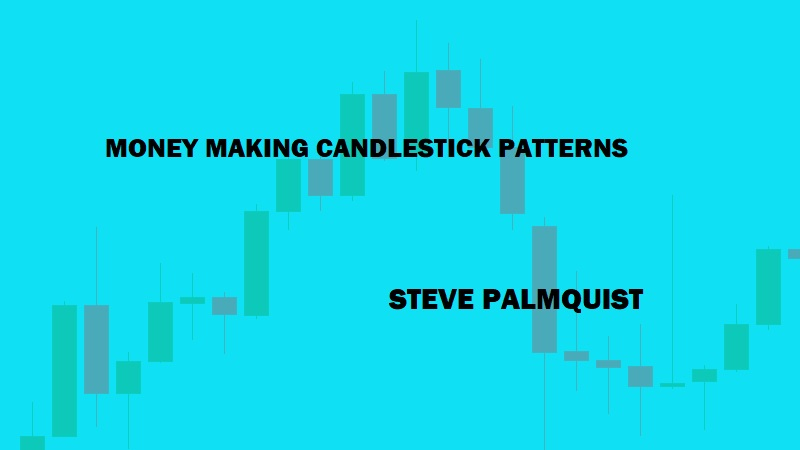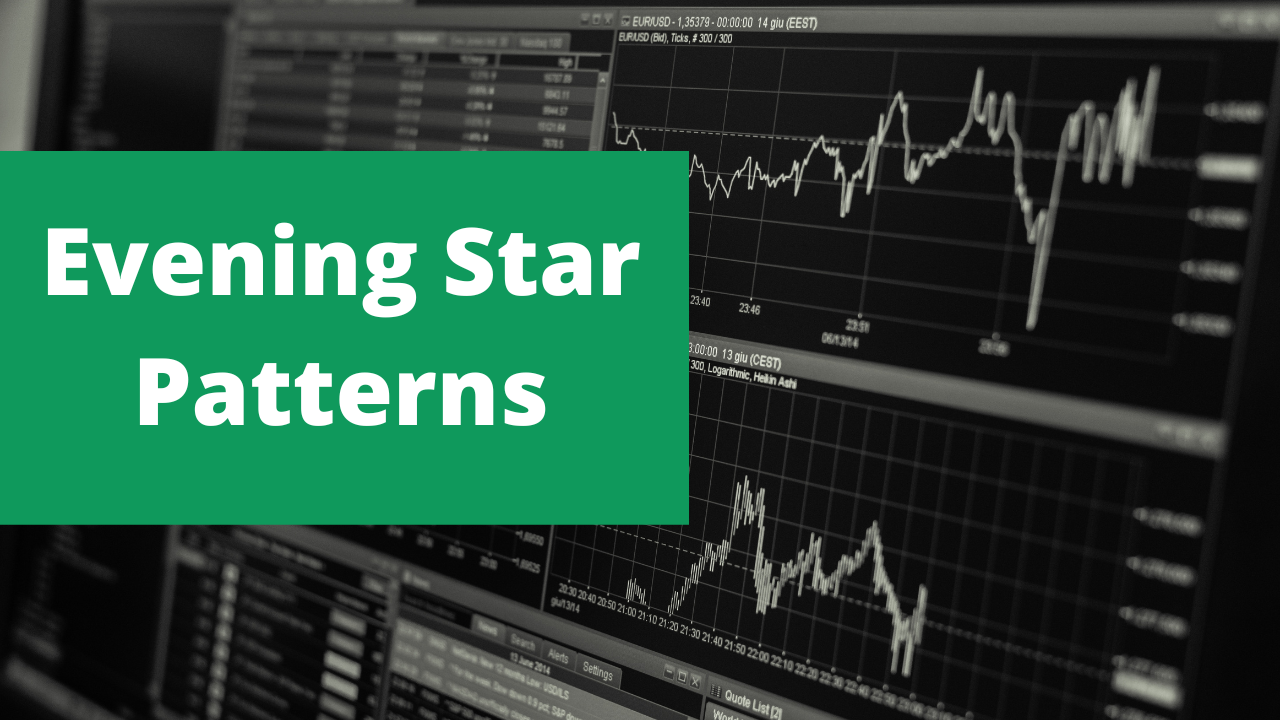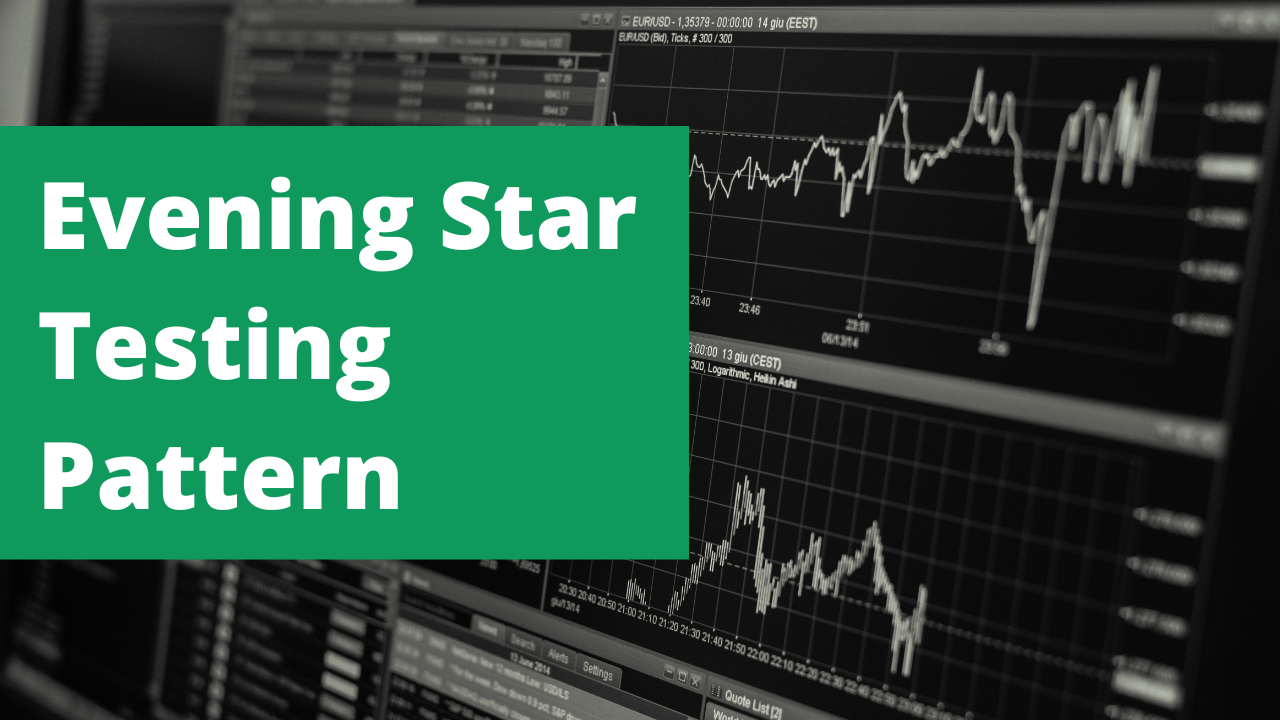Types of Evening Star : Explained with Detail
Evening star types, Recent requirement of evening star, Recent run requirement, MOD1 and MOD2 star
Course: [ MONEY MAKING CANDLESTICK PATTERNS : Chapter 7: Evening Star Patterns ]

After looking at a number of evening star patterns, it seemed they worked well when the second day of the pattern was the recent high.
MOD1 EVENING STAR
Removing
the third day white space gap requirement and leaving the other changes to the
initial pattern definition results in looking for evening stars in uptrending
stocks with: a white body on day one of the pattern that is larger than the
body size of the previous day; a gap up on the second day of the pattern with a
body less than 30% of the first day’s body; and a black body on the third day
of the pattern that closes in the bottom half of the first day’s range. We will
refer to this evening star definition as the “Mod1”
evening star. This definition results in a 3% annualized ROI during the
01/03/ 06 to 05/01/07 test period when using a four day holding period, as
shown in Figure 7.13.
FIGURE 7.13: TEST RESULTS FOR MODI EVENING
STAR DURING JAN. 2006 TO MAY 2007

Since
the “white space on day three” parameter
change resulted in too few trades, we will now look at other parameter changes
and filters for the mod1 evening star to see if we can find a pattern with
better results. The mod1 evening star is not a tradable system because it
yields an annualized ROI less than buy and hold. We need to find a modification
that shows better trading results or use a different pattern for trading.
RECENT HIGH REQUIREMENT
After
looking at a number of evening star patterns, it seemed they worked well when
the second day of the pattern was the recent high. In these cases, the middle
day of the evening star was the peak of the run up, which makes sense since the
evening star is a reversal pattern. An example of this type of pattern is shown
in Figure 7.14.
FIGURE 7.14: EVENING STAR IS RECENT HIGH IN
HSOA ON 05/24/06

One
of the issues with trading is it is easy to look at a number of charts and be
convinced there is a pattern. The advantage of backtesting is you can look at
thousands of charts and patterns and determine how often something actually
happens. Testing the mod1 evening star with the additional requirement that the
pattern occur at a recent high, as shown in Figure
7.14, actually reduced the results slightly and resulted in an
annualized ROI under 2% during the 01/03/06 to 05/01/07 test period.
Knowing What Works and What Doesn’t
At
this point you may be thinking, “Just show me what
works.” But remember, not all patterns can be made to work; and, it is
important to thoroughly understand a pattern before trading it. It is just as
important to know which parameters don’t maximize results as the ones that do
because some days you will see more patterns than you can trade and you will
have to prioritize the opportunities. This is where this information becomes
vital. The more you understand how a trading pattern works, what affects
results and what does not, then the easier it will be to make trades with
confidence.
RECENT RUN REQUIREMENT
Another
filter that looked promising was to look for evening stars in stocks that were
not just in an uptrend, but had shown a strong recent run. The idea is that
after a rapid run, many stocks reverse and the evening star would mark the
reversal. I looked at all the evening stars using the mod1 definition plus a
requirement that the stock had to have run up at least 20% in the last 10 days.
An example of this behavior is shown in Figure
7.15.
FIGURE 7.15: EVENING STAR PATTERN IN MAMA ON
12/22/06

Taking
evening star trades after at least a 20% run up in 10 days sounds like a great
idea. It makes sense that after a fast movement a stock would retrace. However,
traders need to be careful about a few examples and a logical explanation. It
is not what sounds good that matters; it’s what works. This filter actually
reduced results and moved the annualized ROI back into negative territory.
I
tried a number of other parameter changes and filters, and most did not turn
the evening star pattern into a tradable system. In many cases, the pattern is
more susceptible to the market conditions than it is to parameter changes and
filters. Because of this discovery, I used a volume filter that helps locate
stocks that might be running out of steam.
CREATING MOD2 USING A VOLUME REQUIREMENT
I
added the requirement to the mod1 evening star that the short term average
volume be declining and it improved results. The way I calculated the volume
decline was to require that the average volume of the five days before the
evening star pattern be less than 80% of the average volume of the last 25
days. An example of this declining volume pattern is shown in Figure 7.16, in which the low volume days
preceding the formation of the evening star pattern are marked by down arrows
in the volume portion of the chart.
FIGURE 7.16: DECLINING AVERAGE VOLUME EVENING
STAR IN ARD ON 02/27/07

Test
results for declining volume patterns with the mod1 evening star resulted in
promising results as shown in Figure 7.17.
During the 01/03/06 to 05/01/07 test period, this new filter resulted in the
most interesting results seen so far. The 27% annualized ROI is about double
buy and hold and the pattern shows winning trades more than 53% of the time
while producing a respectable 243 trades. Amazing how one simple filter can
make quite a difference; the issue of course is whether we also see positive
results in other time frames.
FIGURE 7.17: TEST RESULTS FOR DECLINING VOLUME
PATTERNS WITH MODI

Testing
the mod1 evening star with declining volume, which we will now call the mod2
evening star, in six different time periods yielded the results shown in Table 7.4. The mod2 pattern only showed a loss in
one period, a period that included the worst NASDAQ bear market in history. In
the other five time periods, the results beat buy and hold by 2-to-1 in four of
the periods and were about the same in the other. This represents a significant
improvement over the results of Table 7.3,
while at the same time producing more trades.
These
results are the beginning of an interesting trading pattern that may be useful
in the trader’s toolbox. I would not trade the basic evening star as first
defined, since the results were less than buy and hold and showed losing trades
most of the time. Adding the parameter changes and filters discussed above
turned the original pattern from something I would pass on into something worth
considering.
TABLE 7.4 MOD2 PATTERN TEST RESULTS IN DIFFERENT
TIME PERIODS
MONEY MAKING CANDLESTICK PATTERNS : Chapter 7: Evening Star Patterns : Tag: Candlestick Pattern Trading, Forex : Evening star types, Recent requirement of evening star, Recent run requirement, MOD1 and MOD2 star - Types of Evening Star : Explained with Detail




